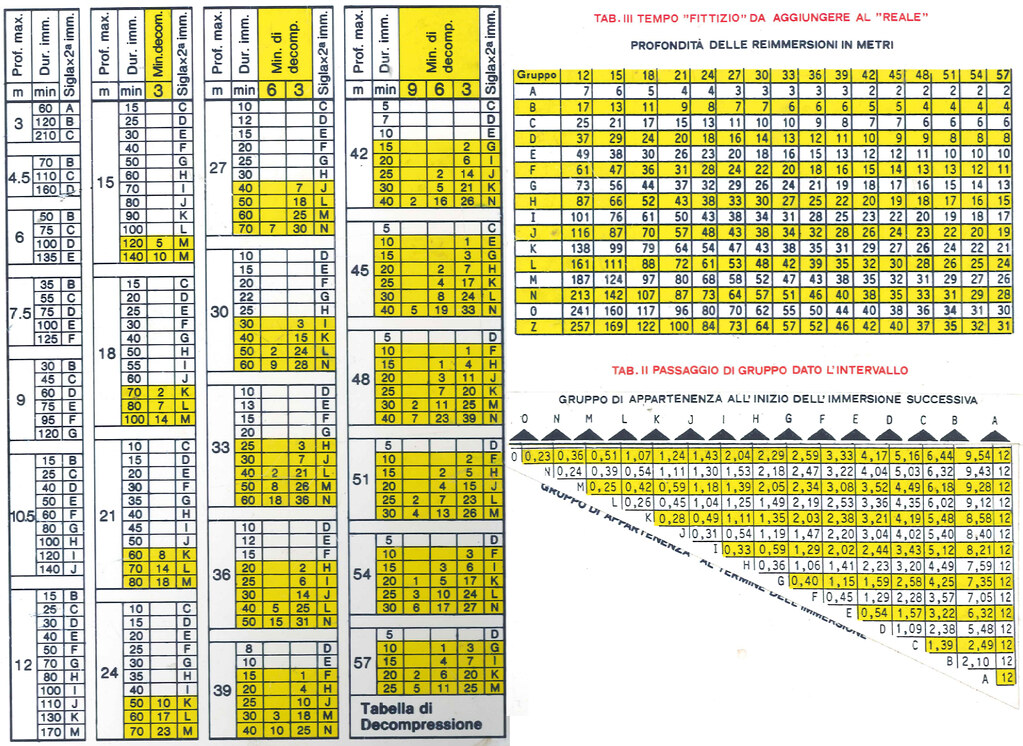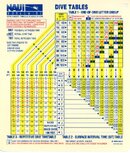Here the tables we were using at the time. According to CMAS, everything listed on these tables was fully recreational (or "sport")!@Angelo Farina,
Yes, your calculations are correct for the U.S. Navy Dive Tables from March 1970. However, this is a planned decompression dive, requiring stops of 2 minutes at 10 feet (6 meters) and 14 minutes at 10 feet (3 meters). A NDL dive to this depth would be 10 minutes using these tables. You were technical diving, or as we used to say, "decompression diving," not sport diving, under NAUI terms at that time. My discussion of solo diving above was about using the sport diving criterion; once into decompression diving, it's a whole different aspect of the sport. Here are the altitude diving corrections we used for Clear Lake.
SeaRat

Here in Italy, CMAS was taught by FIPSAS, which was a bit more restrictive, limiting max depth to 50m (51, in practice). In other countries (France, UK) they were allowed to also use the last two depths in the above table (54 and 57 meters).
As said, the last "white" row before the yellow deco area (the NDL) was considered the most dangerous, as the divers think to avoid deco, so they are not equipped and prepared for it, but any inconvenience can cause a delay, entering the yellow deco area without enough gas.
Instead we were always taught to plan our dive in the second yellow row, keeping the third one as a safety plan.
Our dive was a bit stretched, as it was planned already on the third yellow line, and considering the 4th one as the safety plan. But we were young and stupid!
Of course it was a buddy dive. I agree that such a dive should never be done as solo.





